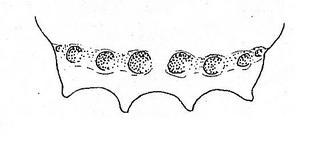
R. M. Bohart L. S. Kimsey, 1982 · 1
Chrysis nitidula, tail |
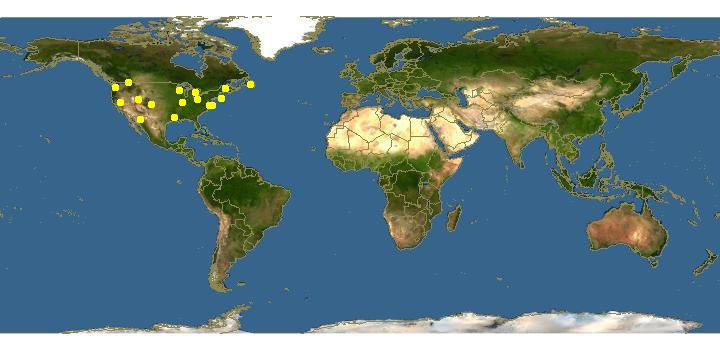
Click on map for details about points.
|
80x5 -
240x3 -
240x4 -
320x1 -
320x2 -
320x3 -
640x1 -
640x2
Set display option above.
Click on
images to enlarge. |
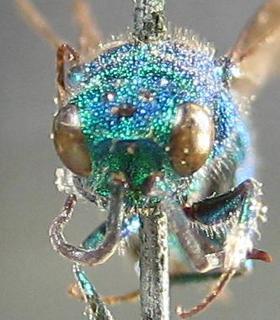
Native Bee Inventory and Monitoring Lab; Photographer: Erika Tucker · 1
Chrysis nitidula, face |
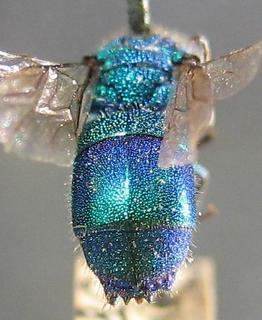
Native Bee Inventory and Monitoring Lab; Photographer: Erika Tucker · 1
Chrysis nitidula, tail |
|
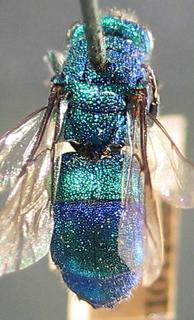
Native Bee Inventory and Monitoring Lab; Photographer: Erika Tucker · 1
Chrysis nitidula, top |
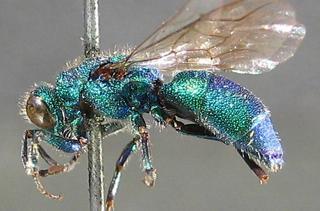
Native Bee Inventory and Monitoring Lab; Photographer: Erika Tucker · 1
Chrysis nitidula |
|
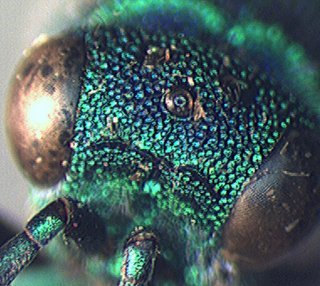
Native Bee Inventory and Monitoring Lab; Photographer: Erika Tucker · 1
Chrysis nitidula, brow, green |
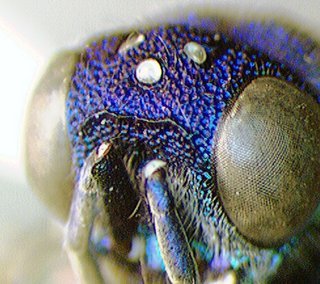
Native Bee Inventory and Monitoring Lab; Photographer: Erika Tucker · 1
Chrysis nitidula, brow |
|
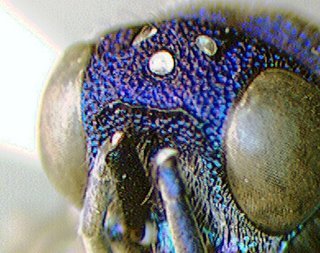
Native Bee Inventory and Monitoring Lab; Photographer: Erika Tucker · 1
Chrysis nitidula, face |
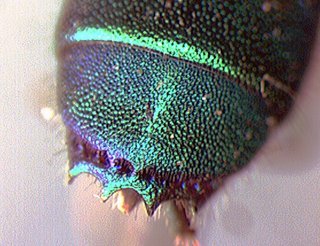
Native Bee Inventory and Monitoring Lab; Photographer: Erika Tucker · 1
Chrysis nitidula, pits |
|
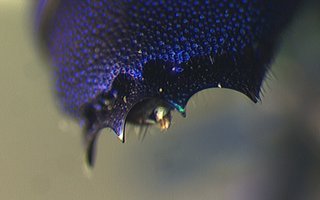
Native Bee Inventory and Monitoring Lab; Photographer: Erika Tucker · 1
Chrysis nitidula, pits |
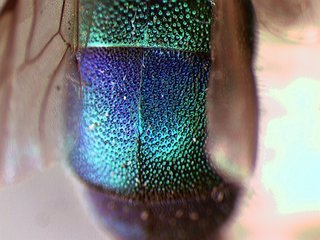
Native Bee Inventory and Monitoring Lab; Photographer: Erika Tucker · 1
Chrysis nitidula, T2 |
|
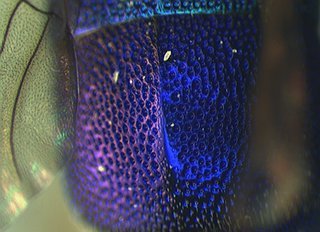
Native Bee Inventory and Monitoring Lab; Photographer: Erika Tucker · 1
Chrysis nitidula, T2 |
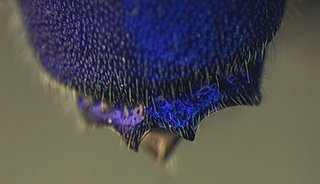
Native Bee Inventory and Monitoring Lab; Photographer: Erika Tucker · 1
Chrysis nitidula, tail |
|
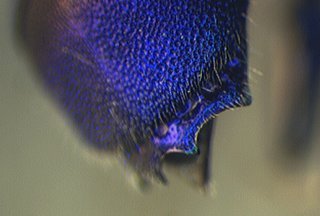
Native Bee Inventory and Monitoring Lab; Photographer: Erika Tucker · 1
Chrysis nitidula, tail |
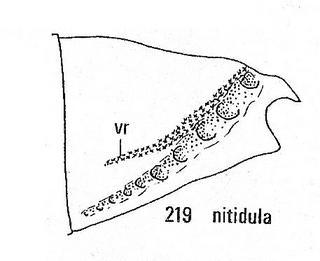
R. M. Bohart and L. S. Kimsey · 1
Chrysis nitidula, tail side |
|
Overview |
Taken from:
R. M. Bohart and L. S. Kimsey. 1982. A Synopsis of the Chrysididae in America North of Mexico.
Chrysis coerulans Fabricius
(Figs. 208, 218, 274, 275)
Chrysis coerulans Fabricius 1805:172. No sex given, Carolina Mus. Dom. Bose. Lost. Neotype female here designated, N. C. North Carolina (ANSP).
Chrysis servillei Brulle 1846:37. Holotype female, les montagnes Rocheuses (Serville Coil., lost?).
Chrysis bella Cresson 1865:312. Holotype female, Colorado Territory (ANSP).
Chrysis nortoni Aaron 1885:237. Lectotype male, Maine (ANSP).
Chrysis canadensis Buysson 1891:37. Holotype female, Quebec, Canada (Paris).
Chrysis conserta Buysson 1891:37. Holotype female, Texas (Paris).
Chrysis praticola Mocsary 1914:50. Syntypes, 5 males and females, Texas (Budapest).
Chrysis sejuncta Mocsary 1914:51. Holotype female, Missouri (Budapest).
Discussion: C. coerulans is closely related to ignita Linnaeus, the generotype and a common palearctic species with many varieties and described subspecies. All of these differ from coerulans because the abdomen is extensively red. However, male genitalia are much alike.
As here restricted, coerulans has the following differentiating characters: black spots of S-II separated by at least 4.0 MOD, no violet red on T-I above basal insertion, no violet red on T-III in a discrete basolateral spot or in a band above pit row (fig. 218), male F-I about twice as long as broad or often less, frontal carina well developed, OOD 2.0-3. 0 LOD, T-II about two thirds as long as substantial median ridge, teeth short to moderate (fig. 208), male S-VIII and paramere (figs. 274, 275).
Without question, coerulans is a variable species and the following is an attempt to consider variation based on material in the U. C. Davis Museum.
The Davis collection contains 897 specimens (272 males and 625 females) of Chrysis coerulans. In studying this material many aspects have been taken into account: coloration, punctation, size, and shape of body parts, especially male genitalia. Size is relatively uniform except in form C below and a few specimens which seem to be in the dwarf (depauperate) or giant status. Coloration appears to have some significance, particularly the amount of metallic blue or green on F-I and S-III in females. Punctation is somewhat variable but for the most part is medium coarse and close in the scapal basin, and medium coarse and a little separated on T-II. An exception is the more polished form C below. Genitalia slides were made from 100 males from all parts of the U.S. and Canada. These show only minor differences in stoutness and pubescence of the paramere which do not seem to be correlated with external features.
Form A (about 45% of material studied) have female F-I in front and most of S-III green to blue. The apicomedial incision of T-III usually approaches a semicircle or a little less.
Form B (about 50% of material studied) have the females differing from A because F-I is dull dark blue to nearly black, and S-III is more black than colored.
Although forms A and B differ in coloration of females, about 20% are somewhat intermediate. Furthermore, nearly all associated males agree with form A in color of S-III but with form B in color of F-I. In our opinion these two intergrading forms taken together come close to typical coerulans.
Form C constitutes about 5% of material studied. These are unusually small and slender specimens (range 5-8 mm) with punctation reduced posteriorly on T-II and before the pit row on T-III. This condition gives form C a polished look, especially in females. Also, the scapal basin is irregularly punctate and a little shiny. Other characteristics are the moderately impressed pit row divided by a broad median ridge, and the unusually shallow apicomedian incision of T-III. Six of our 43 specimens of form C were reared from Symmorphus. It is not unlikely that this form is a regular parasite in such twig nests. As in forms A and B, females are more distinctive than males and male genitalia are not unusual except for being a little small. In size and general shape form C resembles cembricola, which is also known to parasitize Symmorphus. However, in cembricola the frons is considerably narrower, the ocellocular distance is less, female F-I and S-III are extensively blue to green and T-III is not very shiny.
Chrysis coerulans has been reared from a variety of eumenid hosts in twigs and old remodeled Sceliphron mud nests. Parker and Bohart (1966) recorded an association with An1strocerus catskill halophilus Viereck, A. spilogaster Cameron, A adiabatus cytainus (Cameron), and Euodynerus foraminatus scutellaris (Saussure). In addition we have rearing records from Ancistrocerus tuberculocephalus sutterianus (Saussure) (female form A from remodeled mud nest, Davis, California), Pancistrocerus acarophorus Bohart (male form B, natural stem nest, Verdi, Nevada), and Symmorphus cristatus Saussure (female form C, trap nest, Hanover, New Hampshire). It is possible that parasite external appearance may be in some way correlated with the host and its nesting habitat. Other recorded hosts are Ancistrocerus catskill (Saussure) and its whitish marked form or subspecies albophaleratus (Saussure), A. antilope, (Panzer), A. adiabatus (Saussure), Euodynerus foraminatus (Saussure) and its subspecies apopkensis (Robertson), E. leucomelas (Saussure), E. megaera (Lepeletier), Parancistrocerus salcularis rufulus (Bohart), and Symmorphus alomarginatus (Saussure). Useful biological references are Medler (1964), Parker and Bohart (1966), Krombein (1967), Kurczewski and Kurczewski (1970), Eickwort (1973), Evans (1973), and Krombein (1979).
Chrysis nitidula Fabricius
(Fig. 219)
Chrysis nitidula Fabricius 1775:359. biotype female, America (BMNH).
Chrysis cyanea Villers 1789:257.
Chrysis cessata Buysson 1891:36. Holotype female, Nat. Bridge, Virginia (Paris). Chrysis chalcopyga Mocsary 1914:48. Syntype females, Colorado (Budapest).
Discussion: Easy recognition is afforded by the edging of brilliant red above the pit row. This color may continue laterally toward the base of T-III but does not invade the basolateral corner (fig. 219). Less diagnostic features are the long F-I (2.5-3.0 times as long as broad), well developed frontal carina, polished median ridge on T-II, and moderate teeth of T-III, leaving the median notch at less than a half circle, body length 8-10 mm.
Host: Ancistrocerus antilope (Panzer), A. catskill (Saussure), A. adiabatus (Saussure), Euodynerus foraminatus (Saussure), E. schwarzi (Krombein), Symmorphus cristatus Saussure) in stems, wood borings and old mud cells (Krombein 1979:1232).
Material examined: 264 males, 397 females including types of nitidula, cessata and chalcopya.
Distribution: transcontinental in U.S. and Canada, mostly in Upper Austral to Canadian Life Zones.
Species group of Chrysis coerulans Fabricius
Diagnosis: Male F-I longer than F-III and about 1.5-2.0 times as long as wide, female F-I 2.5-3.0 times; subantennal distance usually a little over 1.0 MOD but not more than 2.0 MOD; transverse frontal carina rather regular and complete (except in schusteri), without backward branches, not incurved below; genal carina separated from eye; midocellus not lidded; mesopleuron and metanotum rather simple; T-II nearly always with a polished median longitudinal ridge on at least a part of tergum; T-III distally with a simple edge and four teeth, laterally a little irregular but usually essentially straight except for slightly outcurved distal tooth.
Included species: apontis Bohart, cembricola Krombein, coerulans Fabricius, inflata Aaron, moorei Bohart, nitidula Fabricius, parkeri Moore, schusteri Bohart and violacuna Bohart.
Discussion: The median ridge or keel on T-II is a useful character but it is neither exclusive nor universal in the group. All species are four toothed, have the distal margin of T-III single, and the midocellus not lidded. Males have F-I longer than F-III. The group contains C. coerulans, one of the commonest most widespread, and variable species of Chrysididae in North America. As far as known, Eumenidae serve as hosts for species in the group. Male S-VIII, as shown for coerulans (fig. 275) is much the same for all species. The paramere is practically identical also (fig. 274) except for apontis and parkeri where it is greatly broadened (figs. 272, 273). The more slender coerulans form of paramere is quite similar to that of the European generotype, ignita Linnaeus.
Key to Chrysis coerulans group
1. Brilliant violet red reflections across T-III bordering pit row anteriorly, or basolaterally
on T-III, or on T-I above basal insertion
2
Brilliant violet red not present
4
2. Violet red bordering pit row anteriorly (fig. 219)
.nitidula Fabricius
Violet red sometimes visible in pit row and beyond but not as band above pit row
..3
3. Violet red on T-I above basal insertion; median ridge of T-III pit row usually absent,
resulting in a median pit which is polished and reddish purple; no specific green and violet red spot on T-III basolaterally
.violacuna Bohart
Violet red absent on T-I above basal insertion; median ridge of T-III pit row present and dividing row into two series; a green and violet red spot present on T-III basolaterally
(fig. 214)
moorei Bohart
4. Ocellocular distance less than 2.0 LOD (fig. 207), T-III teeth short but submedian
ones sharp
..cembricola Krombein
Ocellocular distance at least 2.0 LOD (fig. 205), T-III teeth various
.5
5. S-II in male with black spots reaching midline or not more than 1.0 MOD from it; male
F-I more than twice as long as broad; if S-II spots in female are more than 1.0 MOD from midline, then pit row is sunken medially in side view with an overhang above declivity;
west of 100th meridian
6
S-II in male with black spots more than 1.0 MOD from midline; male F-I about twice as long as broad or less; female S-II with spots more than 1.0 MOD from midline and pit row not presenting a median declivity with an overhang in side view
...7
6. S-II with black spots reaching midline (fig. 212) or rarely 0.5 MOD from it; male S-III
extensively blue to green; pit row in female separated by a somewhat depressed but broad partition, not presenting a sharp declivity in side view (fig. 215)
.............parkeri Moore
S-II in male with black spots about 0.75 to 1. 0 MOD from midline; male S-III with green spot of varying size; pit row in female with median partition weak or absent so that it presents a sharp declivity and an overhang in side view (fig. 217)
...apontis Bohart
7. T-III breadth at apex of tooth row only about half basal breadth of segment, an abrupt
bulge laterally above pit row; teeth of T-III unusually long and sharp (fig. 211)
..inflata Aaron
T-III breadth at apex of tooth row considerably more than half basal breadth of segment, teeth of T-III various (fig. 208)
..8
8. Frons with transverse carina well developed (as in fig. 207)
coerulans Fabricius
Frons with transverse carina vestigial with three slight remnants (fig. 205), or absent
schusteri Bohart
|
|
|
Names | |
|
|
| Supported by | |
Updated: 2024-04-27 21:13:39 gmt
|